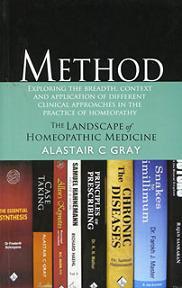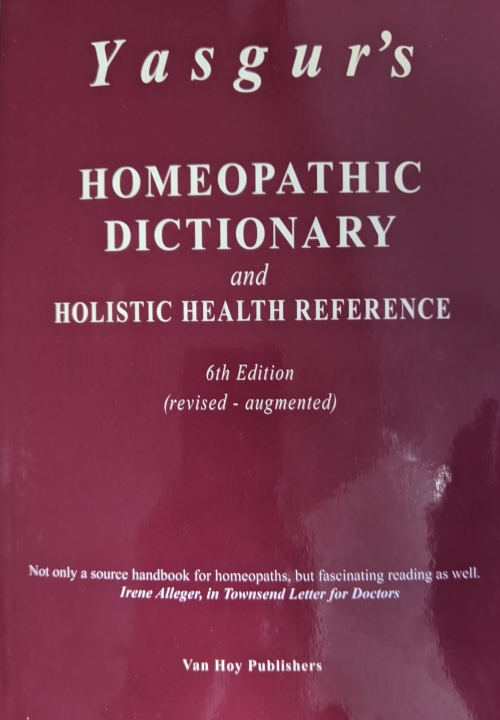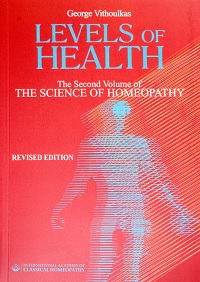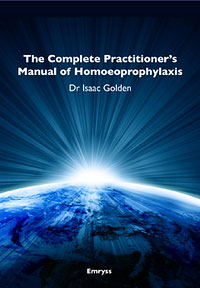Method: Exploring the Breadth, Context and Application of Different Clinical Approaches in the Practice of Homeopathy by ALASTAIR GRAY [#GRAMET]
$44.00
Description
Method: Exploring the Breadth, Context and Application of Different Clinical Approaches in the Practice of Homeopathy – The Landscape of Homeopathic Medicine by Alastair Gray
What are the different methods of prescribing in homeopathy?
Why is homeopathic medicine practiced so differently world wide, from one country to another, from one city, one village, one street, one consultation room to the next? It is not through any lack of tradition, research, evidence or rigour, all of which homeopathic medicine has in abundance. Rather, it is about interpretation of the key and fundamental principles of homeopathy and ultimately the immediate needs of the client and patient sitting in the consultation room in front of that practitioner. In order to take in and integrate this broad landscape, this book explores the historical, theoretical and practical application of the major methods employed by homeopaths across the globe
Contents
Foreword in
Acknowledgements vii
Contributors ix
Publisher’s Note xiii
Chapters
Introduction 3
Why This Book 6
Literature Review 9
Watson’s Methodologies 10
Nomenclature, Method and Methodology 15
The Different Methods and Their Classification 16
Method at the Coalface of Homeopathy – A Personal Story 17
Flexibility with Principle 21
Culture, Football and Buddhism 22
What Authors Say, What They Do, and Change over Time 24
Hahnemann, Bonninghausen and the Totality of Characteristic Symptoms of the Disease 29
Totality of the Characteristic Symptoms of the Disease 31
Samuel Hahnemann 1755-1843 33
Hahnemann in Paris 42
His Cases / How He Practiced 44
Cases Illustrative of Homeopathic Practice 45
Some other cases 53
Underpinnings of Hahnemannian Homeopathy 57
Peculiarity 57
Totality 58
Causation 59
Health 59
Disease 61
Cure 61
von Bönninghausen (1785-1864) 62
Complete Symptom 63
The Therapeutic Pocketbook 65
Cases 66
Disadvantages of the Method 69
Advantages of the Method 71
Method in Epidemic Diseases 73
Further Reading 76
Kent and the Totality of the Characteristics of the Person 77
The Person not the Disease 79
Totality of the Characteristics of the Person 80
James Tyler Kent, 1849-1916 82
Kent’s Legacy 84
Swedenborg 86
What Is Disease? 90
Kentianism 92
Kent’s Other Influences on Homeopathy 95
Repertory 95
Types 96
Books 96
Potency and Remedies 96
Waiting and Waiting 97
Kent’s Hierarchy 97
The Mind 98
Kent’s Case Work 100
Subtle Changes 106
Case Examples 107
Strategy 109
Further Reading 110
Constitution and Constitutional Prescribing 111
Introduction 113
The Confusion 114
The Prescribing Style in a Nutshell 116
The Disadvantages of Constitutional Prescribing 118
Kent, Watson and Constitution 119
Massive Totality 121
Limitations 121
Definitions of Constitution 125
Etymology of the Word ‘Constitution’ in the Context of Homeopathy 127
Advocates of Constitutional Prescribing 129
Hydrogenoid Constitution 135
From von Grauvogl’s practice 135
Oxygenoid 144
Carbo-nitrogenoid Constitution 145
From von Grauvogl’s Practice 146
Lesser and Nebel 149
Carbonic 151
Phosphoric 152
Flouric 152
Vannier’s Constitution and Types 152
Constitutional Prescribing in Light of a True Understanding of Constitution 155
Ingredients Needed for a Constitutional Prescription 160
Mappa Mundi and Temperaments 163
Little on the Phlegmatic Temperament 167
The Temperament of the Phlegmatic 168
Phlegmatic Bodily Constitution (Generals) 170
Phlegmatic Predispositions (Diathesis and Miasms) 172
Phlegmatic Remedies 174
Conclusions 175
Of Practical Use 177
Further Reading 179
Vital Sensation Shilpa Bhouraskar 181
Introduction 185
The Evolution of Homeopathy in Stages 188
Comparison of Stages, Disease and Medicine Understanding 193
Application of the Stages in Practice 193 Confirm Your Prescription Through All the Four Stages 193
A Case Example Incorporating All Stages 194
Which Approach to Use and When 212
The Sensation Method Compared With the Earlier Methods 215
Conclusion 218
Further Reading 218
Miasmatic Prescribing Jennifer Osborne 219
The Use of Nosodes 219
The use of anti-miasmatic remedies 220
Faithfulness in Tracing the Picture of the Disease 225
What Is Miasmatic Prescribing? 230
Nosodes as the Simillimum and Intercurrents 230
Other Application of Intercurrents 234
Other Benefits of a Knowledge and Understanding of Miasms 236
References 240
Further Reading 242
Jan Scholten’s Group Analysis Greg Cope 243
Jan Scholten 247
Group Analysis 249
Reverse Law of Similars 251
Homeopathy and the Minerals 251
Homeopathy and the Elements 255
The Plant Kingdom 260
Prescribing Techniques 261
Case example 263
References 269
Further Reading 270
Eizayaga Ben Gadd 271
Introduction 275
About Eizayaga 278
Treating the Patient versus Treating the Disease 279
Different Types of Similitude 280
Totality of Symptoms 282
Classification of Symptoms 284
Classification of Diseases 285
Layers 287
Lesion Layer 287
Fundamental Layer 289
Constitutional Layer 290
Miasmatic Layer 293
Prescribing 294
Posology 295
Repertory 296
Criticisms of Eizayaga’s Approach 297
Case Example 298
Conclusion 303
References and Further Reading 304
Keynote Prescribing 307
Definitions 309
Keynote Materia Medica’s 310
Why Keynote Prescribing at All? 311
Misapplication 313
History and Development of Keynote Prescribing 314
The Components of the Method 316
Totality Again 316
Red-line Symptoms 317
Will Taylor and Meg Ryan – Practical Keynote Prescribing 318
What are the Characteristic Features of a Keynote? 320
The “Three-legged Stool’ Approach to Keynotes 321
Storming the Fortress / Achieving Break-through at the Weak Spots 322
‘Minimum Syndrome of Maximum Value’ 323
Experts at Work – a Few More Examples 324
Analogous Parts 328
Ruling Features of the Case Reflect the ‘Genius’ of the Remedy 328
Other Leading Proponents 332
Advantages of Keynote Prescribing 339
Disadvantages of Keynote Prescribing 342
Further Reading 344
Isopathy 345
Definitions 348
Introduction 348
Practicalities 350
Context 351
Isopathy and Pre-Homeopathic History 352
Advocates 357
The Response to Isopathy 361
Collet and Others 364
The Controversy 365
Refining the Method 379
Advantages and Some Extraordinary Examples 380
Conclusion 385
Further Reading 385
Appendix 387
Tautopathy 397
Definition 400
What Exactly Is the Method? 400
Why Do We Need It? 402
Review of the Literature 404
Application of Tautopathy 417
The Pill, Naprosyn and Cortisone and Vaccinations 418
Intercurrent Prescribing 419
Case Examples – Patel 420
Who Uses It Today and Research 422
Limitations 423
Provings and Tautopathy 423
Further Reading 424
Appendix 425
Organ Prescribing, Organopathy and Burnett 429
Introduction 432
Background 432
Affinity, Organ Prescribing, Organopathy, Supporting the Organs 434
Specificity of Seat 435
Locality 439
The Limitations of the Totality of Symptoms’ 443
Drilling Deeper: Burnett’s Influences 446
Rademacher and the Organ Remedies 447
Burnett’s Cases 449
Burnett’s Use of Potency 454
The Organ Remedies 455
Random Gems from Burnett, Rademacher and Others 456
Nosodes 459
For and Against 460
Computers and Burnett 462
Burnett’s Works 462
Conclusion 463
Further Reading 466
Polypharmacy, Complexes and Combinations 467
Definitions 469
Literature and Opinion 469
Controversy, Mongrelism, Multilation and Perversion 470
The Double Remedy Experiments of 1833 472
The Technique Itself 487
Why NO! Opinions Past and Present 489
Contemporary Opposition 501
Why Yes! Opinions – Past and Present 509
Some Commonly Used Combinations 510
When Is it Best to Use Polypharmacy? 514
Further Reading 516
Conclusion 519
Method and Totality 519
If You Meet Hahnemann on the Road, Kill Him 526
The Influence of Hahnemann 527
The Implications of Individualism in Homeopathy 532
Teachers in Contemporary Homeopathy 537
Method or No Method 539
Implications for Practice 543
References 545
Index 559
Paperback, 564 Pages
ISBN 978-2-87491-0210
1Lbs. 10oz.






Reviews
There are no reviews yet.